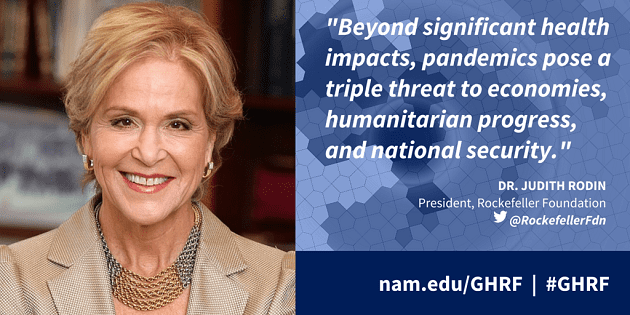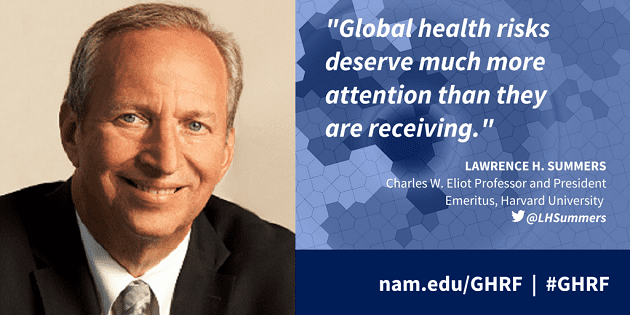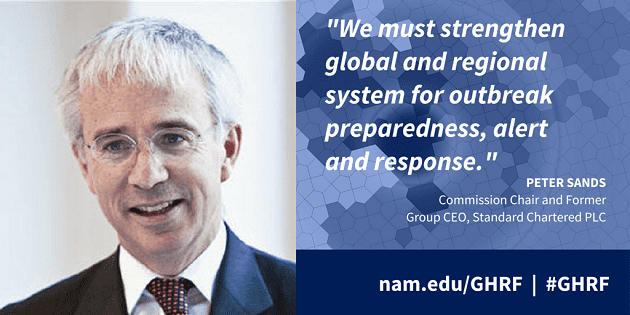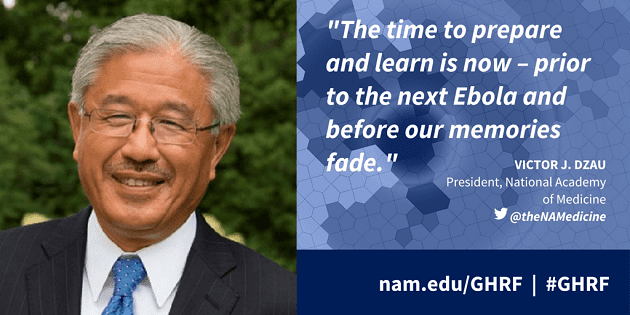This post originally appeared on LarrySummers.com.

I was privileged this morning to deliver keynote remarks at the release event for the Global Health Risk Framework Commission report on “The Neglected Dimension of Global Security: A Framework to Counter Infectious Disease Crises“. The commission, sponsored by the National Academy of Medicine and chaired by Peter Sands, has delivered a very important report on what I think is the issue with the highest ratio of seriousness to policy preparation in the global system. Indeed, for reasons I sketched in my remarks, I believe the threat to global well-being from pandemics over the next century is comparable to the threat from global climate change.
I began by expanding on why I think pandemics are such an important issue. The global mortality rate from the flu pandemic of 1918 was 7000 times as large as from the recent Ebola outbreak. AIDS profoundly changed the human experience in Africa. No one knows the probability of a recurrence of these kinds of disasters. History is too short to permit reliable estimates and in any event conditions are rapidly changing because of scientific improvements on the one hand, and huge increases in global interconnection on the other.
In the context of the Global Health 2035 report that Dean Jamison and I developed, we considered the economic benefit of mortality reduction using approaches derived from economic theory. We noted that the well established fact that people demand higher pay to accept riskier jobs demonstrates that reduced mortality risk has economic value. And we further showed that these benefits are very large relative to standard estimates of the economic impact of health interventions.
In related work, Dean and I with Victoria Fan calculate the potential cost of a 1918 flu recurrence, discounted by its chance of happening. We expect to publish this work soon. On plausible assumptions we find an expected flu cost approaching $1 trillion a year going forward into the 21st century. This underscores the urgency of doing all that can be done to counter pandemic risks.

Eisenhower famously said that “in preparing for battle, I have always found that plans are useless but planning is indispensable”. So also with the pandemic threat, which is what makes the GHRF report so important. I have three main takeaways from its consideration of the Ebola experience and its stock-taking of the current global architecture.
“In preparing for battle, I have always found that plans are useless but planning is indispensable”.
First, this is an area where the urgent has crowded out the profoundly important. In too many countries, pressing near term needs and budgetary pressures have prevented the establishment of necessary infrastructures for public health. Such resilient health systems would be a high payoff investment even if catastrophe never comes and would be transformative if and when catastrophe comes.
Second, the international system needs to do more to clarify responsibilities and authorities when the next emergency comes and to put in place financial mechanisms for rapid action. Given the nonlinear exponential character of pandemic processes this is of the highest urgency.
Third, there is a need for more and better science both ex-ante and ex-post after a pathogen is identified. I will never forget my friend Barry Bloom, former Dean of Harvard’s School of Public Health, asking me how I would prefer to have spent money in the 1950s: on scholarships for iron lungs or on supporting Salk and Sabin. There is much here that science could be doing but currently is not. Given that profiting hugely in time of pandemic is unacceptable, markets provide insufficient incentives for gaps to be filled. As such, pre-emptive research is fundamentally important.




Leave a comment